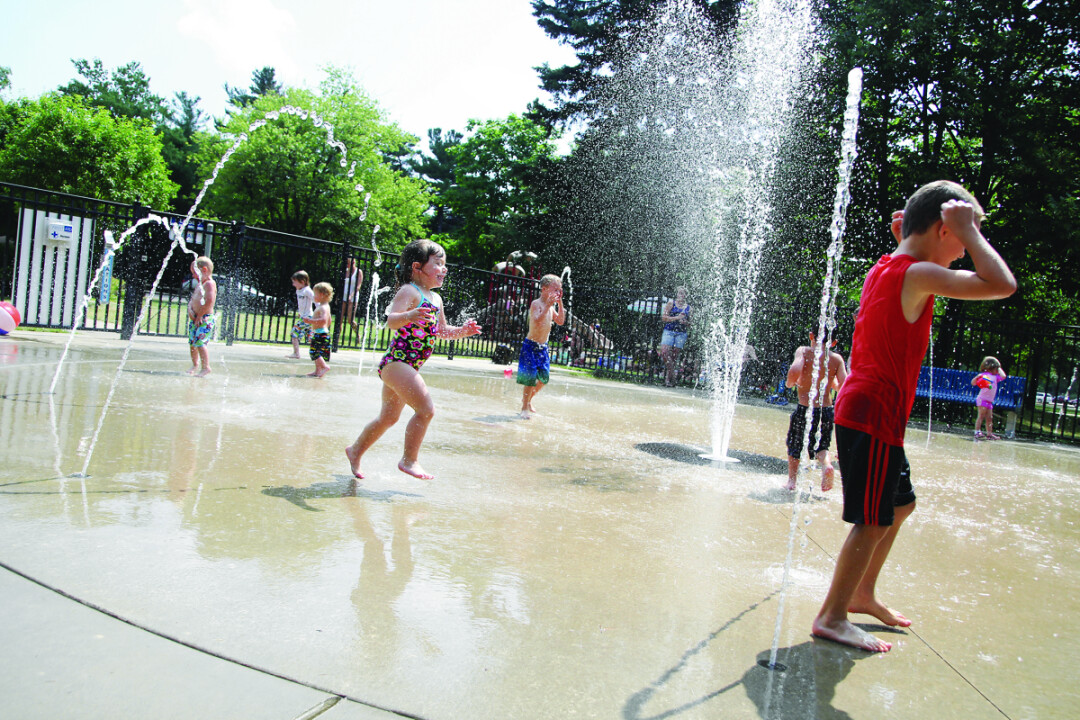On Sunny Days Like These, Sunscreen Is a Must

On sunny summer days, more than 30 children climb on jungle gyms and glide down slides in the outdoor play area at Kids USA Learning Center in Chippewa Falls.
The play is carefree, but armor against the elements is not.
Garret Bresina, owner of the day care, said teachers are instructed to slather the kids in SPF 50 lotion before they walk outside.
It’s a must, not an option.
“We try to do our part to prevent skin cancer,” Bresina said. “It’s all for the protection of the children so they can enjoy the outdoors, and so they don’t have to hurt.”
Skin cancer is by far the most common cancer in the United States, according to the American Cancer Society. It’s estimated that 76,380 Americans were diagnosed with melanoma and more than 10,000 died from it in 2016, the society’s website said.
Georgia Smith, executive director of cancer care services at HSHS Sacred Heart Hospital, said getting a sunburned with blisters just once as a child can triple the risk of melanoma skin cancer later in life.
No one wants to see their child in pain. Sunburns can happen in a short period of time. Parents forget kids get just as much sun running in and out of a kiddie pool in the back yard as they would at the beach, Smith said.
“It’s important that we understand small children’s skin is so much more sensitive than ours,” Georgia Smith said. “They are the ones that truly need the higher SPF.”
Smith said 50 SPF is best for everyone, but the recommendation is children under the age of 2 should wear 50 SPF, ages 2 through 10 can wear 30 SPF, and children older than 10 through adulthood can try 15 SPF. Infants up to 6 months of age should be limited to 15 minutes at a time in direct sunlight.
Application is key. Cover the skin with sunscreen once an hour – more if kids are swimming, she said. But the best defense is a good offense: Dress children in lightweight clothing if the weather permits.
“The best thing you can do is cover them,” Smith said. “They make clothing that is tested to guard against ultraviolet rays. Just having a shirt with gauzy sleeves is all you need for a little more protection.”
Smith also recommends wearing hats to cover sensitive areas such as the tops of the ears, the nose, and the scalp where the hair is parted – the three greatest areas of risk for skin cancer, she said.
Getting burned on the scalp hurts and is a skin-flaking mess, but it also could lead to undiagnosed skin cancer on the scalp because hair covers the physical indication of cancer.
“We can’t watch our children every second,” Smith said. “There’s a shirts and skins basketball game. The next thing you know, they come in and their shoulders are blistered. Once it happens, it’s kind of like the horse is out of the barn, but make sure you’re educating your children.”
Smith concedes that the best prevention is avoiding the risk, but she also recognizes that 100 percent avoidance is unlikely.
“You can use acne medications for blemishes. You can use moisturizers for dry skin,” Smith said. “The most important ritual you can do for your skin and yourself is sunscreen.”
What Causes Skin Cancer?
Two types of ultraviolet radiation, UVA and UVB, damage the skin, age it prematurely and increase the risk of skin cancer. Blame sunburn on UVB rays, while UVA rays are associated with wrinkling, leathering, and sagging. UVA rays also exacerbate the carcinogenic effects of UVB rays and are being seen as a cause of skin cancer on their own.
Source: skincancer.org
What is SPF?
SPF (Sun Protection Factor) is a measure of a sunscreen’s ability to prevent UVB from damaging the skin. If it takes 20 minutes for your unprotected skin to start turning red, using an SPF 15 sunscreen theoretically prevents reddening 15 times longer – about five hours. Another way to look at it is in terms of percentages: SPF 15 filters out approximately 93 percent of all incoming UVB rays. SPF 30 keeps out 97 percent and SPF 50 keeps out 98 percent. They may seem like negligible differences, but if you are light sensitive, or have a history of skin cancer, those extra percentages will make a difference. And as you can see, no sunscreen can block all UV rays. But there are problems with the SPF model: First, no sunscreen, regardless of strength, should be expected to stay effective longer than two hours without reapplication. Second, “reddening” of the skin is a reaction to UVB rays alone and tells you little about what UVA damage you may be getting. Plenty of damage can be done without the red flag of sunburned being raised.
Source: skincancer.org




















